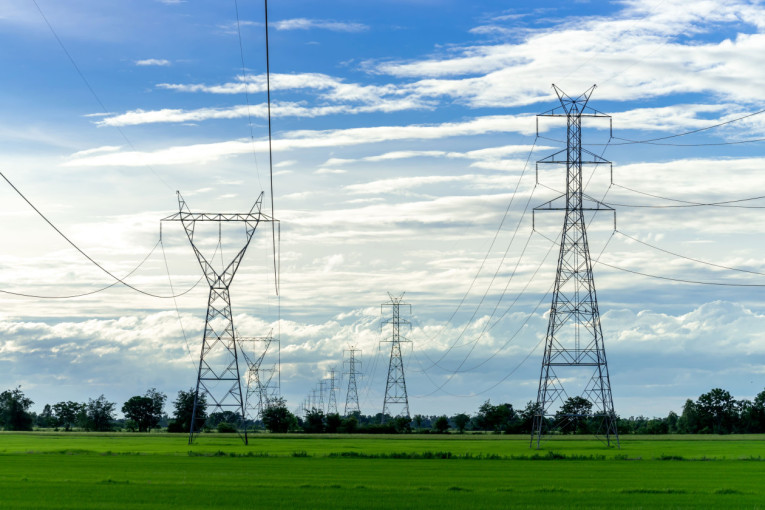
According to data from the Ministry of Energy and Mineral Resources (ESDM), electricity consumption in 2023 reached 1,337 kWh per capita, an increase of 13.98% from 2022’s 1,173 kWh per capita.
However, Indonesia’s average electricity consumption level is still lower than other ASEAN countries.
While the Philippines, Myanmar, Cambodia, and Timor Leste have lower consumption rates than Indonesia, countries like Vietnam, Thailand, Malaysia, Laos, Singapore, and Brunei Darussalam have much higher average electricity consumption.
Dr. Rachmawan Budiarto, a lecturer in Physics Engineering at the UGM Faculty of Engineering (FT UGM) and a renewable energy researcher, stated that low electricity consumption is due to the industrial sector’s inability to grow optimally.
“We have not reached a high level of industrialization, and naturally, electricity consumption for economic activities has not been maximized,” Dr. Budiarto explained in a virtual interview on Thursday (Oct. 3).
In addition to the limited consumption from the industrial sector, Budiarto noted that the government has not yet succeeded in accelerating the electrification ratio (ER) to nearly 100%.
As is known, the electrification ratio refers to the proportion of households with electricity sources, whether from PLN or non-PLN, compared to the total number of households.
In many areas, however, the ER has only been able to supply electricity with unreliable services, such as electricity only being available at night or limited to 12 hours a day.
“This condition contributes to the low electricity consumption per capita,” he revealed.
The Acting Head of the UGM Center for People’s Economy Studies believes that energy supply and reliability must be improved, especially in rural and 3T (underdeveloped, frontier, and outermost) areas, to increase electricity consumption in the country.
In addition, the industrialization program must also be enhanced if electricity consumption is to rise.
“The industrial sector heavily depends on energy usage,” he explained.

According to Dr. Budiarto, in 2019, the industrial sector consumed more than 30% of Indonesia’s total electricity, and it is projected that by 2050, this sector will still dominate the electricity demand.
“Energy conservation programs must continue to be implemented to achieve high added value in the economic activities generated from energy consumption,” he said.
Regarding energy consumption in the industrial and commercial sectors, the government, through ESDM Ministerial Regulation No.26 of 2021, continues to encourage the shift from conventional electricity to environmentally friendly green products by using Solar Power Plants (PLTS).
Given Indonesia’s significant potential, the shift in consumer behavior towards sustainability and the environmental impact of their products is expected to accelerate the penetration of new renewable energy (EBT).
Based on Ministry of ESDM data, solar energy has the highest potential at 3,295 GW, but its utilization is only 0.27 GW.
“There is a tendency for industries to take the initiative to build their own rooftop PLTS,” said Dr. Budiarto.
Although this regulation has two sides—on the one hand, it may lead to an oversupply of electricity, on the other, Dr. Budiarto believes that the role of industry or the private sector in increasing renewable energy consumption, not limited to PLTS, for production or business activities, should be welcomed.
This is due to the state’s limited financial capacity to meet energy mix and national energy decarbonization targets.
He added that efforts should focus on building an enabling environment to boost industry and private sector participation in meeting various electricity quality standards.
“I am confident that the government and industry will build strong partnerships to enhance the role of renewable energy in the energy mix,” he said optimistically.
Regarding recommendations for the new government, Dr. Budiarto advised that the government should intensively pursue high economic growth targets while continuing to reduce the Gini Index (income inequality).
The Gini Index is used to indicate income distribution inequality among the population in a given area.
“If economic growth is good, people’s purchasing power will also increase, which will, in turn, impact the growing electricity demand,” Dr. Budiarto explained.
The expert also emphasized that the government must maintain the momentum and even increase the role of renewable energy in the energy mix.
Thus far, many challenges remain in accelerating the achievement of energy mix targets, such as the absence of a specific legal framework regulating renewable energy, policies that do not fully support the increase of primary energy from renewable sources, and suboptimal public participation in energy policy formulation.
“The government also needs to consider various breakthrough business models because accelerating the achievement of energy mix targets requires substantial funding,” he concluded.
Author: Triya Andriyani
Image: Freepik
Post-editor: Afif

